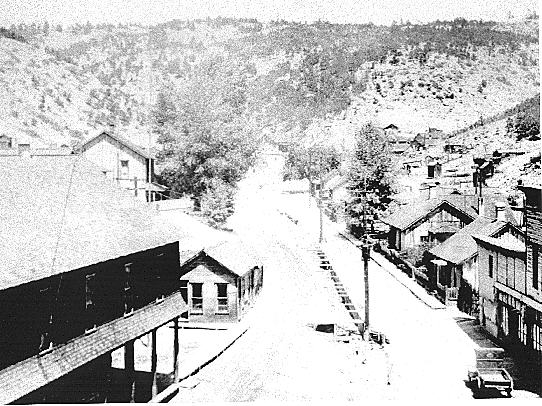
Cambria, Wyoming, shortly after abandonment.
By 1928 the coal deposits were no longer sufficient to economically mine.
In February, 1928, the announcement was made that the operation would close by April. On
March 15, the mine whistle blew for the last time. A formal closing ceremony was conducted
on April 28. by the time of its abandonment, some 12,000,000 tons of coal had been mined at
Cambria.
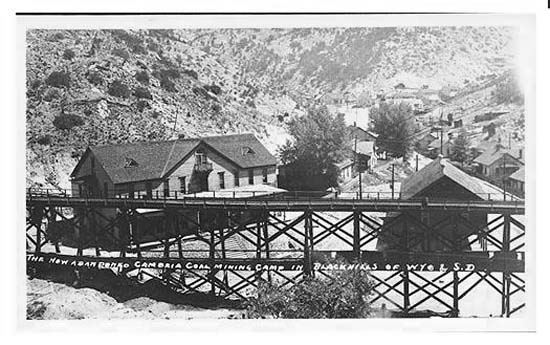
Cambria, shortly after abandonment.
Buildings were sold, and some scavenged for lumber. As illustrated by
the photos below, the town fell rapidly fell into ruin. On December 31, 1928, the post office
which had been established in 1890 was discontinued. Today little more is visible except the
street patterns. The town site is privately owned and trespassing is discouraged.
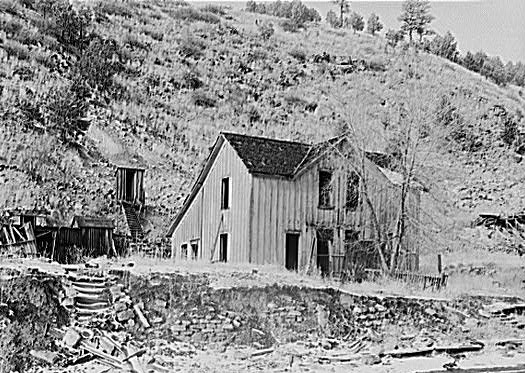
Abandoned House, Cambria, November 1937, R. Lee
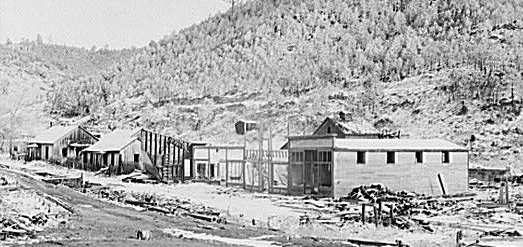
Cambria, Wyoming, November 1937, R. Lee
Compare this scene with the photo at top of page. This photo, together with other photos on this page, 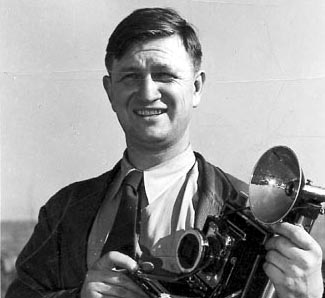 were taken by Russell Lee (1903-1986), photo to right, for the Farm Security Administration, a New
Deal program. Lee was a compatriot of photographer Arthur Rothstein. Several of Rothstein's
pictures are included in the Big Horn Basin and Medicine Bow pages of this
website.
were taken by Russell Lee (1903-1986), photo to right, for the Farm Security Administration, a New
Deal program. Lee was a compatriot of photographer Arthur Rothstein. Several of Rothstein's
pictures are included in the Big Horn Basin and Medicine Bow pages of this
website.
Lee worked as a part of the Historical Section of the Farm Security Administration under
the creative supervision of Roy Stryker (1893-1975). Stryker, originally a Columbia
University economist, was described by one photographer who worked for him later as
"an archivist. He didn't give a damn about a picture at the time it was made.
He was interested in what it would mean twenty years later... He was saving
pictures for a record of the past."
During the period 1935 to 1942, the Historical Section created 77,000 photographs, the purpose of which
was to gain support for the Administration by depicting the poverty
of farmers and migrant workers. Thus, as also illustrated by Rothstein's photos,
the pictures tended to be bleak and depressing. In his later life, Lee became the first
professor of photography at the University of Texas, Austin.
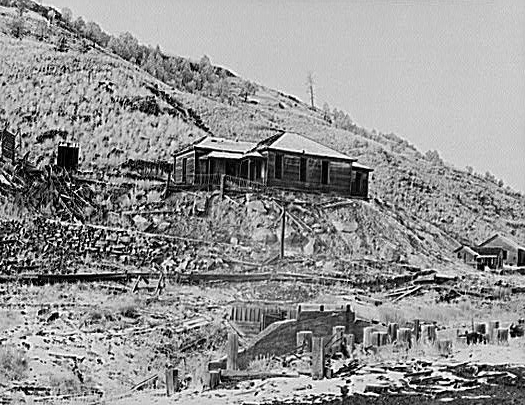
Superintendent's House, Cambria, November 1937, R. Lee
Below the house are the remains of the
railroad station. The Burlington received permission from the Interstate Commerce Commission
to abandon the line to Newcastle in 1929.
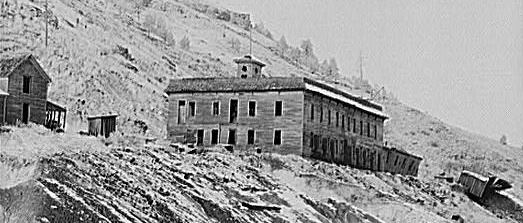
Hotel, Cambria, November, 1937, R. Lee.
Compare the above scene with 1890 view of Cambria below. The hotel is on the left in the below
view.
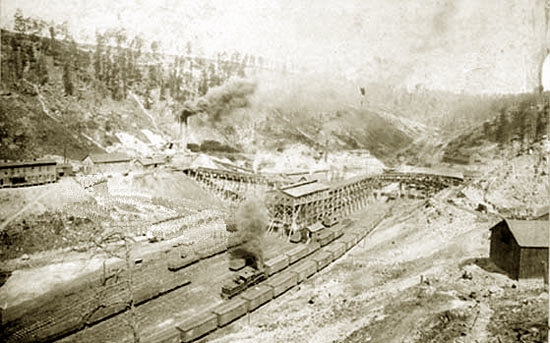
Cambria Tipple, 1890.
In 1923,
the Cambria Fuel Company started construction of a smaller resort facility to be known as
the "Cambria Casino Park," which was completed
in 1928 at a cost of more than $250,000.
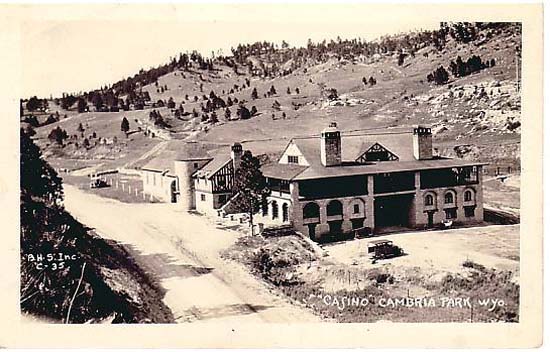
Cambria Park Casino
The term "casino" has no relation to gambling. It refers to an attractive place for the
entertainment of mostly local residents. With the closing of the mine, the new facility was sold to an
entity Cambria Park Commissioners. The facility managed to carry it self for
about four years and then leased out. During World War II, the facility was unable to
pay its taxes and was sold for taxes. It has been leased at various times
to the Fying V Ranch which had cattle operations in the area and to the
Pentecostal Church as a bible camp. It has subsequently been
operated as a dude ranch and is still in operation
today as a bed and breakfast known as the Flying V Cambria Inn.
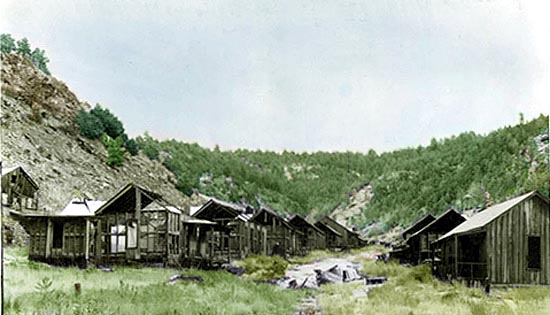
Cambria, looking "up-canyon," approx. 1940.
Next page: The Lincoln Highway.
|